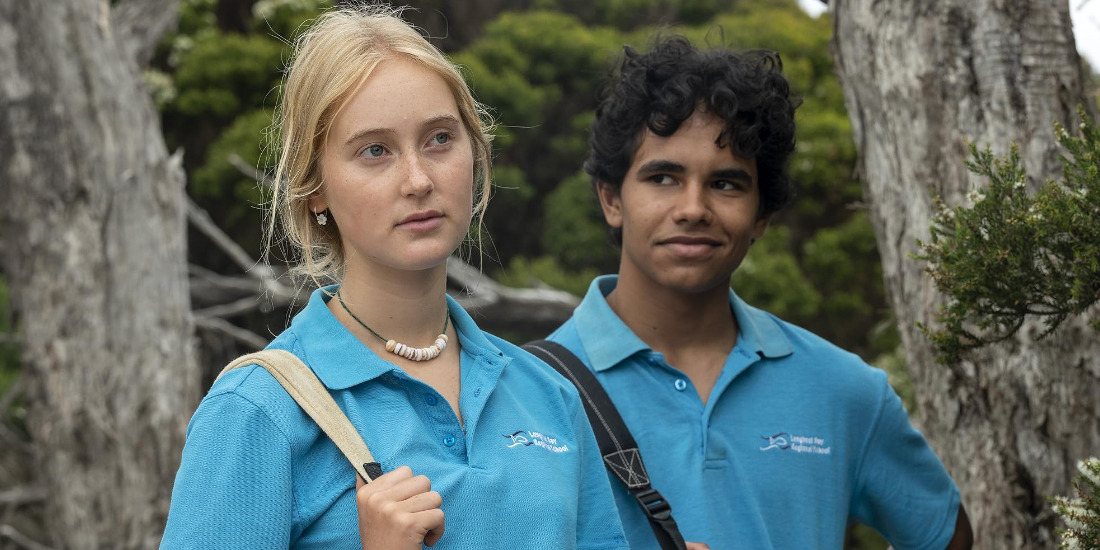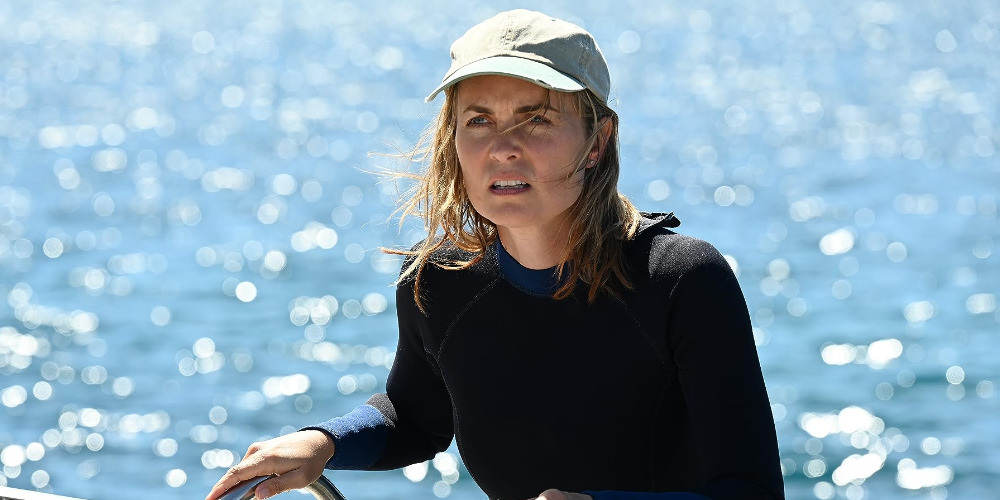In ‘Blueback,’ the film revolving around the fascinating connection between a girl and a rare Blue Groper Fish, the audience accompanies the protagonist through a scenic, thrilling adventure that often unfolds under the ocean. Abby develops an early love for the sea and its diverse life forms, having grown up under her activist mother, Dora Jackson. Yet, she holds onto a special bond with a specific fish she nicknames “Blueback.” Thus, once emboldened poachers reduce the safety of the bay for creatures such as Blueback, young Abby and her mother take it upon themselves to ensure the animals’ and their home’s safety.
The film explores the Jackson women and their close connection to the natural world as it alternates between a dual narrative, distinguished by the passage of time. Therefore, with activism, aquatic wildlife preservation, and sanctuary at its center, the film likely compels the audience to wonder if Dora and Abby’s stories have any basis in real-life events or people.
Blueback: A Novella By Tim Winton
Robert Connolly’s ‘Blueback’ is not based on a true story. Instead, the film is a book-to-movie adaptation of the Australian award-winning author Tim Winton’s fictional eponymous nature novella. Winton’s work, published in 1997, revolved around the story of a young boy named Abel, son of Dora Jackson, a woman fiercely protective of the nature around her. The book follows Abel’s narrative as he befriends a large Groper Fish and ends up undertaking a momentous underwater adventure.

When discussing the book’s writing process, Winton often cites the story as having “just slipped out.” “Fully formed,” expanded the author in a conversation with The Sydney Morning Herald. “Like a shark or a newborn child, it was swimming before it was born. And it’s never been out of print. In writing it, I knew I was reaching back to the child I’d once been, the awestruck boy for whom the world was still enchanted. But now I see I was also reaching forward— to the man I was yet to become. Because I’ve been swimming in that book’s wake ever since— it changed the shape of my life.”
Although a fictionalized account, the story’s subject matter of an ocean in need of saving remained a socially relevant topic at the time of the book’s inception. However, after Winton finished the tale, the relevancy of the matter only grew tenfold. Consequently, his fabricated yet sincere narrative of a mother-son duo fighting to preserve their Bay paved the path for the author’s environmental activism.
Therefore, filmmaker Robert Connolly, who has previously adapted Winton’s stories on the screen in ‘The Turning,’ wanted to remain faithful to the source material and to maintain that sense of inspiration within the tale. The Writer/Director discussed the same in a conversation with The Hollywood Reporter and said, “Jacques Cousteau used to talk about this idea that if you make people love something, they will care for it.”
“So, ‘Blueback’s’ ambition is more along those lines.” Connolly added further, “We’re trying to take an audience beneath the waves to experience that amazing environment in way they haven’t before — with large format cameras, an amazing underwater team, but also a beautiful story.”
As such, Connolly prioritized a sense of realism within the depiction of the natural underwater world in ‘Blueback’ to ensure the audience walks away with an authentic experience. As for adapting the storylines and characters within the novel, Connolly worked on the script alone until the final product, wherein he consulted Winton as a co-writer to look the story over. Thus, ultimately, the film offers an impressive on-screen adaptation of a fictional novella.
The Unintentional Real-Life Parallels In Dora and Abby’s Characters
Since the story itself is a work of fiction, equally conjured by Author Winton and Filmmaker Connolly, the characters within its narrative similarly remain fictitious in nature. For his part, Connolly’s most evident departure from the novel comes from his decision to swap out the novella’s male protagonist for a female character. The change came on the heels of the filmmaker’s daughter, Kitty, criticizing her father’s tendency to create male-driven stories.

As such, Connolly decided to turn Abel into Abby on Winton’s approval. Although Abel’s passionate drive provided a point of relatability in the books, his gender-bent version, Abby, ended up bringing a new reflection of reality to the character.
Connolly addressed the same topic and said, “[But] What was interesting [about the genderbending] is that the film then started to move very quickly to get financed. I realized that there was a real sense of a Greta Thunberg generation of young women that are championing the environmental movement. So, it was a really timely and appropriate change, and Tim was really happy about that.” As such, in some unintentional ways, Abby’s character parallels a visible part of reality within environmental activism circles.
Likewise, after creating Dora Jackson’s character, armed with the infamous dialogue, “We come from water, we belong to it,” Winton realized he unwittingly echoed a real-life personality and one of his heroes, Rachel Carson. The woman, a marine biologist and writer, has long been associated with notions of the sea. “Carson called the ocean the great mother of life,” said the Winton. “And she’s right. We’re all children of the sea.”
However, these similarities only remain a testament to the realism of the characters rather than a sign of their real-life basis. Since both Dora and Abby’s characters, as depicted in the film, were created only in service of the fictional narrative, both activists remain rooted in fictionality.
Read More: Best Mom-Daughter Movies on Netflix


You must be logged in to post a comment.